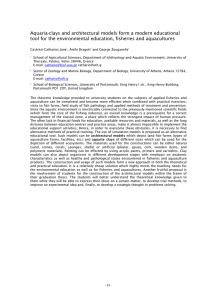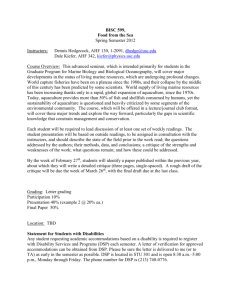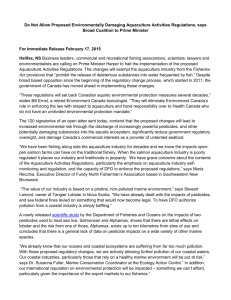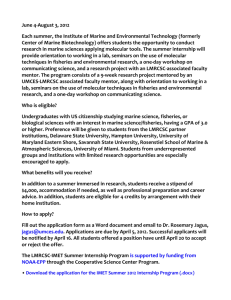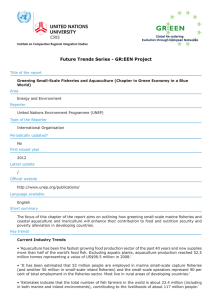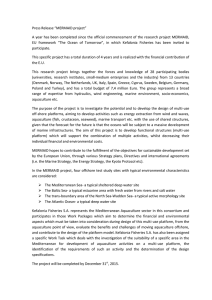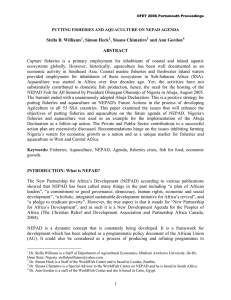SUSTAINABLE HARVEST OF BIOTIC OCEAN RESOURCES
advertisement
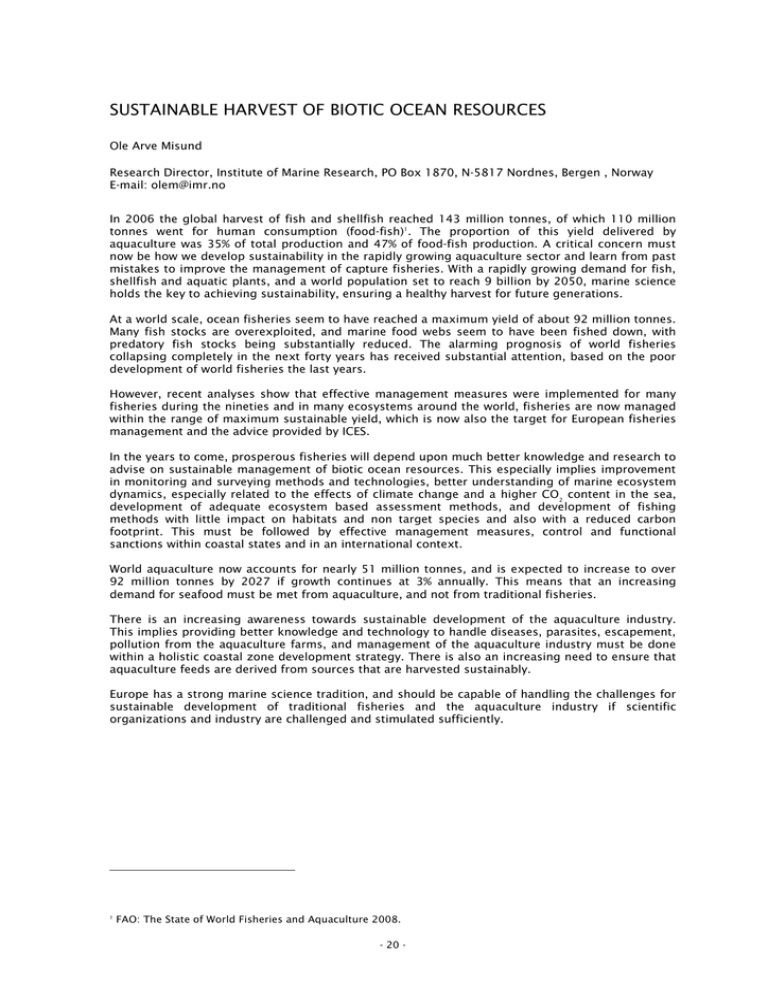
SUSTAINABLE HARVEST OF BIOTIC OCEAN RESOURCES Ole Arve Misund Research Director, Institute of Marine Research, PO Box 1870, N-5817 Nordnes, Bergen , Norway E-mail: olem@imr.no In 2006 the global harvest of fish and shellfish reached 143 million tonnes, of which 110 million tonnes went for human consumption (food-fish)1. The proportion of this yield delivered by aquaculture was 35% of total production and 47% of food-fish production. A critical concern must now be how we develop sustainability in the rapidly growing aquaculture sector and learn from past mistakes to improve the management of capture fisheries. With a rapidly growing demand for fish, shellfish and aquatic plants, and a world population set to reach 9 billion by 2050, marine science holds the key to achieving sustainability, ensuring a healthy harvest for future generations. At a world scale, ocean fisheries seem to have reached a maximum yield of about 92 million tonnes. Many fish stocks are overexploited, and marine food webs seem to have been fished down, with predatory fish stocks being substantially reduced. The alarming prognosis of world fisheries collapsing completely in the next forty years has received substantial attention, based on the poor development of world fisheries the last years. However, recent analyses show that effective management measures were implemented for many fisheries during the nineties and in many ecosystems around the world, fisheries are now managed within the range of maximum sustainable yield, which is now also the target for European fisheries management and the advice provided by ICES. In the years to come, prosperous fisheries will depend upon much better knowledge and research to advise on sustainable management of biotic ocean resources. This especially implies improvement in monitoring and surveying methods and technologies, better understanding of marine ecosystem dynamics, especially related to the effects of climate change and a higher CO2 content in the sea, development of adequate ecosystem based assessment methods, and development of fishing methods with little impact on habitats and non target species and also with a reduced carbon footprint. This must be followed by effective management measures, control and functional sanctions within coastal states and in an international context. World aquaculture now accounts for nearly 51 million tonnes, and is expected to increase to over 92 million tonnes by 2027 if growth continues at 3% annually. This means that an increasing demand for seafood must be met from aquaculture, and not from traditional fisheries. There is an increasing awareness towards sustainable development of the aquaculture industry. This implies providing better knowledge and technology to handle diseases, parasites, escapement, pollution from the aquaculture farms, and management of the aquaculture industry must be done within a holistic coastal zone development strategy. There is also an increasing need to ensure that aquaculture feeds are derived from sources that are harvested sustainably. Europe has a strong marine science tradition, and should be capable of handling the challenges for sustainable development of traditional fisheries and the aquaculture industry if scientific organizations and industry are challenged and stimulated sufficiently. 1 FAO: The State of World Fisheries and Aquaculture 2008. - 20 -
